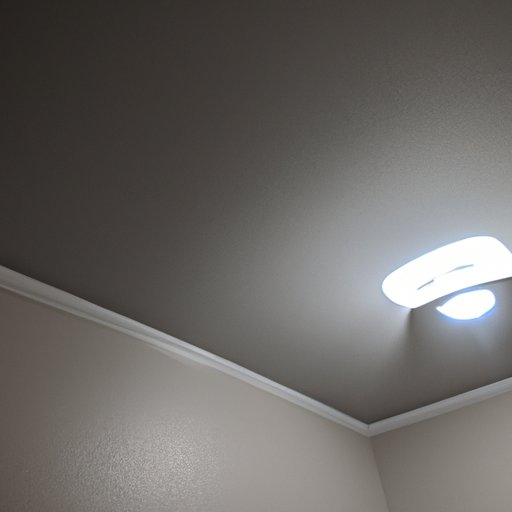Introduction
When you’re painting a room, it can be easy to overlook the ceiling. However, the ceiling is an important part of the overall look and feel of a room, and getting the ceiling paint right can be the difference between a room that looks finished and one that looks unfinished. In this article, we’ll provide a step-by-step guide on how to match ceiling paint for the perfect look.
Analyze the Room’s Color Scheme
The first step in matching ceiling paint is to take a look at the room’s existing color scheme. This includes examining the walls, flooring, furniture, and other elements in the room. It’s important to consider how the ceiling color will fit in with the overall look. For example, if the walls are a light blue, you may want to choose a slightly darker shade of blue for the ceiling.
Consider Lighting
The type of lighting in the room can also have an impact on the appearance of the ceiling paint. Natural light can make colors appear brighter, while artificial lighting can make colors appear duller. If the room has fluorescent lighting, for example, you may want to choose a lighter shade of paint to ensure the color isn’t too dark.
Choose a Neutral Shade
If you’re looking for a subtle look, you may want to choose a neutral shade for your ceiling paint. A neutral shade is one that is close to the wall color, but not exactly the same. This can help to tie the room together without overpowering the other colors in the room. You may also want to consider adding a touch of contrast by using a slightly darker or lighter shade of the wall color.
Add Contrast
For a more dramatic look, you may want to add contrast by using a contrasting color for the ceiling paint. This can help to add depth and interest to the room. When choosing a contrasting color, it’s important to avoid anything too bright or overwhelming. Instead, opt for something that complements the existing colors in the room.
Select a Sheen
The last step in matching ceiling paint is to select a sheen. There are several sheens available, ranging from flat to glossy. The type of sheen you choose should depend on the type of room being painted. For example, a bathroom or kitchen may benefit from a semi-gloss or high-gloss sheen, while a bedroom may look better with a flat or eggshell finish.
Conclusion
Matching ceiling paint doesn’t have to be difficult. By following these steps—analyzing the room’s color scheme, considering lighting, choosing a neutral shade, adding contrast and selecting a sheen—you can create a beautiful and cohesive look that ties the entire room together. With a little bit of effort, you can transform any room into a place you’ll love to spend time in.


